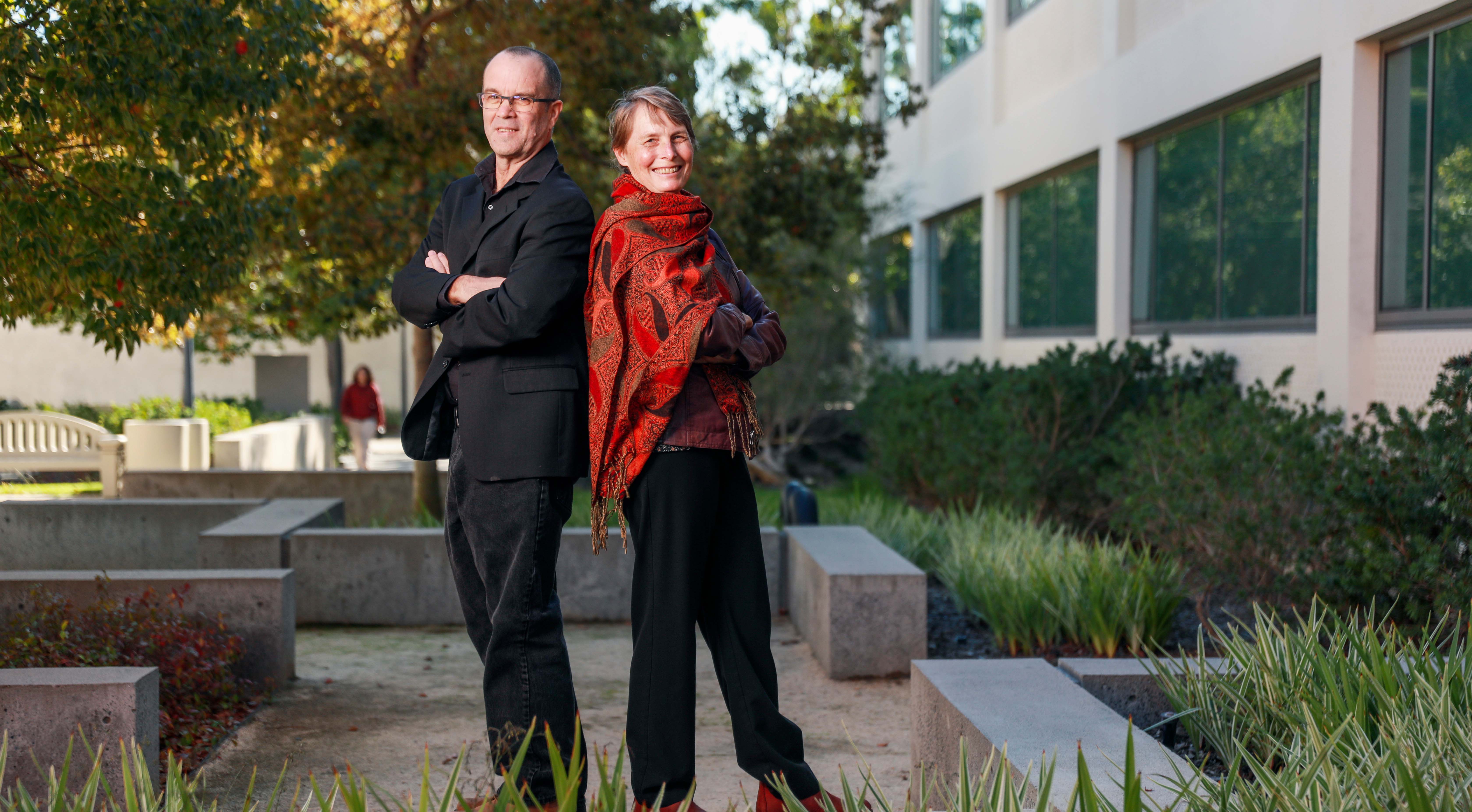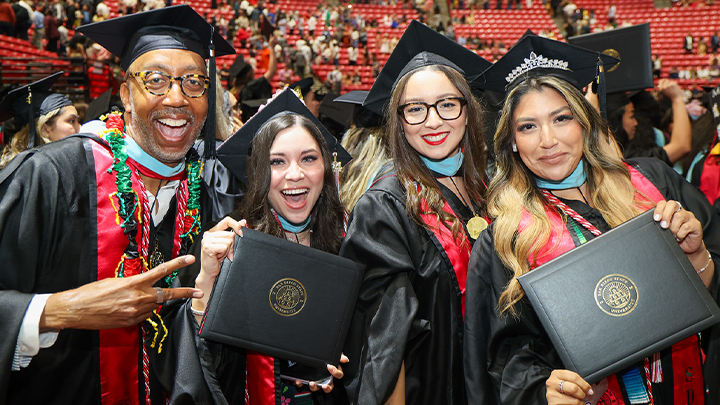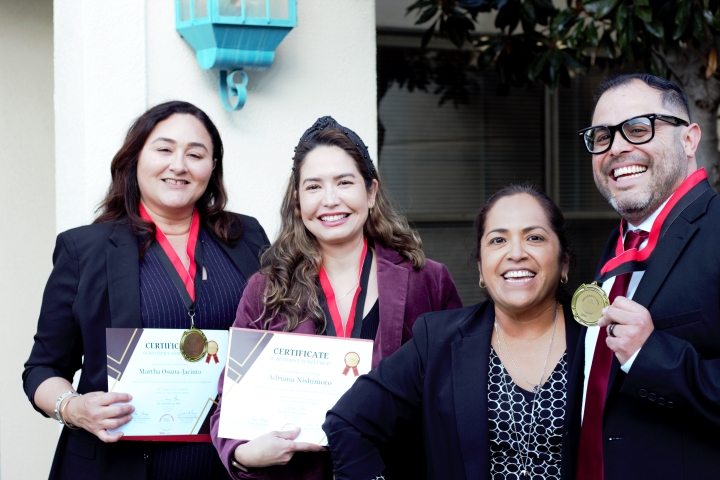National Academy of Sciences Member to Advance Research, Sustainability Goals at SDSU
New SDSU hire will be the only National Academy member at any California State University (CSU) campus. Membership in the academy is considered among the highest national honors for scientists.

San Diego State University’s aspirations for a ramped-up research portfolio take a major leap forward this fall with the hiring of two faculty members, one of whom will become SDSU’s first member of the National Academy of Sciences, the nation’s oldest and most prestigious honorary scientific society.
National Academy of Sciences member Janet Franklin uses geospatial data (digital maps) to study the effects of environmental change on biodiversity in plant communities and the essential habitats they provide for individual species, an issue expected to become increasingly important as climate change accelerates.
Sergio Rey, founding director of the Center for Geospatial Sciences at UC Riverside, develops new computational techniques for using geographic data, and is a major proponent for making them available through open-source software and open science principles. Rey will be transferring the research center to SDSU under a new name later this year.
Franklin and Rey, who are married to each other, are both coming from UC Riverside to faculty appointments at SDSU. Both will join the Department of Geography, already a major leader in creating and interpreting Big Data for geographic information sciences (GIS).
Adela de la Torre, president of SDSU, said Franklin’s hire was made possible by an endowment created in 2015 by a number of major donors who contributed to The Campanile Foundation to help advance SDSU's movement toward becoming an R1 Doctoral University, a designation from the Carnegie Classification of Higher Education. Their gifts were specifically reserved to draw a member of the National Academy of Sciences (NAS). According to an NAS database, Franklin will be the only living member of the organization of scholars from any California State University campus.
“Membership in the academy is the highest recognition that a scientist can receive, and SDSU is now at a level where we can attract this kind of talent for the benefit of our students,” said de la Torre.
Hala Madanat, interim vice president for research and innovation, called the hirings “the perfect package deal” and said they speak to SDSU’s desire to become an R1 instiution. The researchers’ expertise also serves important California priorities surrounding water, climate and wildfires, she said.
“When we bring in nationally recognized researchers like Janet and Sergio, the whole institution benefits,” Madanat said. “Undergraduates have more opportunities to engage in advanced research, masters and doctoral students get to work alongside experienced mentors, and SDSU becomes increasingly competitive, allowing us to recruit more top-notch faculty and expand our research portfolio and impact.”
Franklin will be filling an endowed chair position, supported by a fund established to promote the university’s “high achievement and research capability and created by The Campanile Foundation), SDSU’s 501(c)(3) auxiliary.
Franklin, a conservation biogeographer, uses digital maps and other spatial data from remote sensing to understand where species are found on earth, and to also explore the environmental conditions to which they are linked.
“I’m particularly interested in how environmental change, especially climate change and land use change, might affect ecological systems and species,” she said, adding that increasing urbanization is a major factor in the loss of biodiversity.
In addition to what some regard as a moral obligation to prevent species extinctions, Franklin said “ecosystems basically support us…everything that humans need and do depends on those so-called ecosystem services” that provide clean water and grasslands that support agriculture.
“Ecological systems might shift on a large scale and fairly quickly under these rapid influences of global change,” Franklin said. “It’s important for everybody from water managers to politicians to citizens to anticipate how those changes might affect us in California.”
Fernando Bosco, geography department chair, said having a faculty member of Franklin’s stature and expertise “is for us, the culmination of a dream of being positioned as one of the top geography departments.”
“To have a member of the Academy within our ranks is going to give us exposure and bring our research to the next level,” Bosco said. With Franklin’s interest in climate change, he added, it also speaks to sustainability efforts addressed by the university’s strategic plan.
Geography and Society
Rey is also a leader in the use of geospatial data and an innovator of geospatial analytics to solve problems that are more in the social realm. He develops new methods for testing for spatial clustering, looking at the evolution of patterns over time. The results can provide insights into the racial, ethnic and class-based segregation found in such matters as education and the opioid epidemic, he said.
As he put it last year in an activity report from his UC Riverside research center: “Geography underpins many of the issues facing our world.” Just one example of how the information can be used: examining the relationship between disparities in public school outcomes and the neighborhoods they occupy.
“You can try to ask questions about comparative inequalities and whether spatial disparities are widening over time,” Rey said.
Rey’s Riverside center has drawn more than $15.6 million in research support from such sources as the National Science Foundation and the Bill & Melinda Gates Foundation since 2017.
At the center, Rey directs open-source projects to make computational methods available to the broader research community. Bosco said GIS initially grew in the for-profit realm, and that this collaborative approach “is about getting outside of the boundaries of commercial packages and is more of a collective effort of scientists.” Under this model, he said, SDSU will be contributing to universities around the world.
Rey taught at SDSU from 1994 to 2008 and is a former geography department chairperson. Franklin taught in the geography and biology departments from 1988 to 2009. They met in graduate school at UC Santa Barbara.
“San Diego State was the kind of place where you had very productive colleagues,” Franklin said. “Vibrant and dynamic. We are very excited to come back.”
Bosco said his department is grateful for the hiring support from the TCF fund.
“We couldn’t have done this ourselves as a department,” he said.


